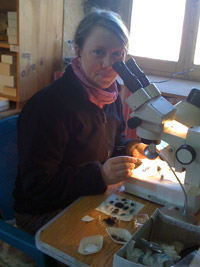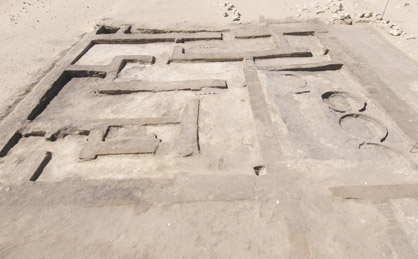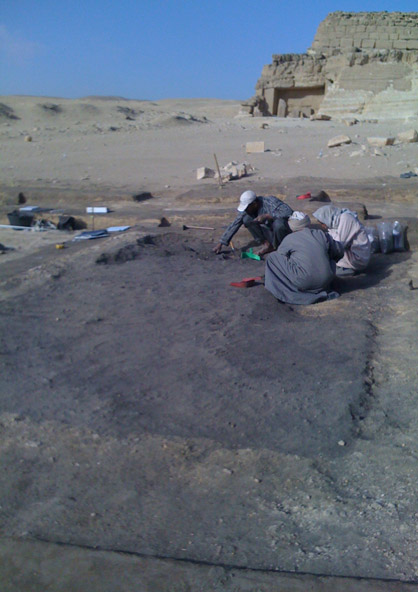Posted by Claire Malleson

Claire sorting seeds at the microscope (Photo by Mary Anne Murray)
Arriving in Cairo this time had an extra air of expectation to it. After the events of the past several weeks what might have changed? Well, not much yet! Not that affects the day to day business of archaeobotany (the study of ancient plants) on the Giza Plateau anyway.
I’m settling back into a familiar routine comfortably already. Work days in the lab for me all follow the same pattern; breakfast in the villa, drive up to plateau to the lab, settle down at my microscope with a cup of tea, my tweezers, and my iPod, then sort though archaeobotanical samples all morning until ‘second breakfast’, then back to work until lunch. After a drive back down to the villa, some food then a drive back up, the afternoon work seems more peaceful, the tourists (yes, there are some here!) are all gone by 4pm so the last hour of work is really calm and quiet.
At the moment I’m working though a plant sample taken from the area of round silos in House E in Khentkawes Town (KKT). We had several exceptionally rich and exciting botanical samples taken from under the silos (all charred seeds, grains, straw and wood) from this area. It is possible that this burnt cereal processing waste and other plants were put there to protect the cereal grain from mice and other vermin.

The round silos of House E in Kentkhawes Town (Photo by Jason Quinlan)
Once we have sorted, recorded and analysed the results we’ll have some really interesting results – very different to the material from the main site of the Heit el-Ghurab town. There is much more diversity of plant species in this particular area which makes my job even more interesting than usual.

Excavating the burnt plants from under the round silos (Photo by Mary Anne Murray)
Most of our questions can be answered once we have worked though the plant samples and analysed the results. When I have finished this large sample, I’ll be moving on to the samples taken from features in House Unit 1 in the Western Town, still being excavated by the team this season.
